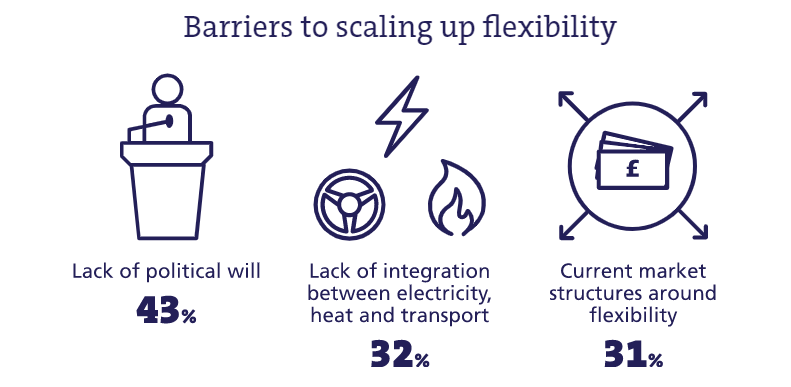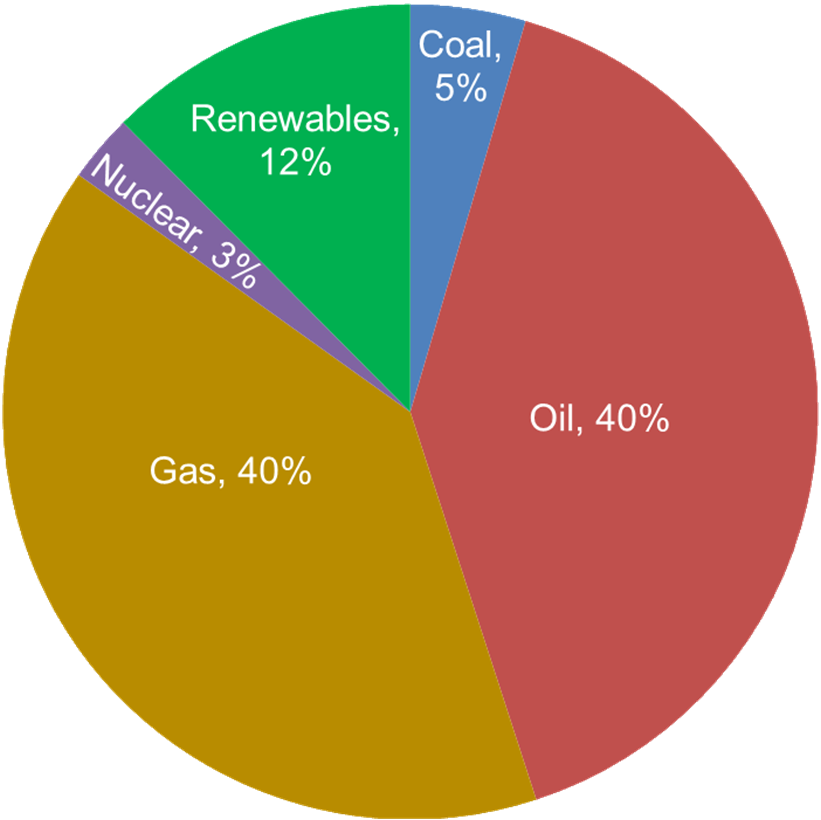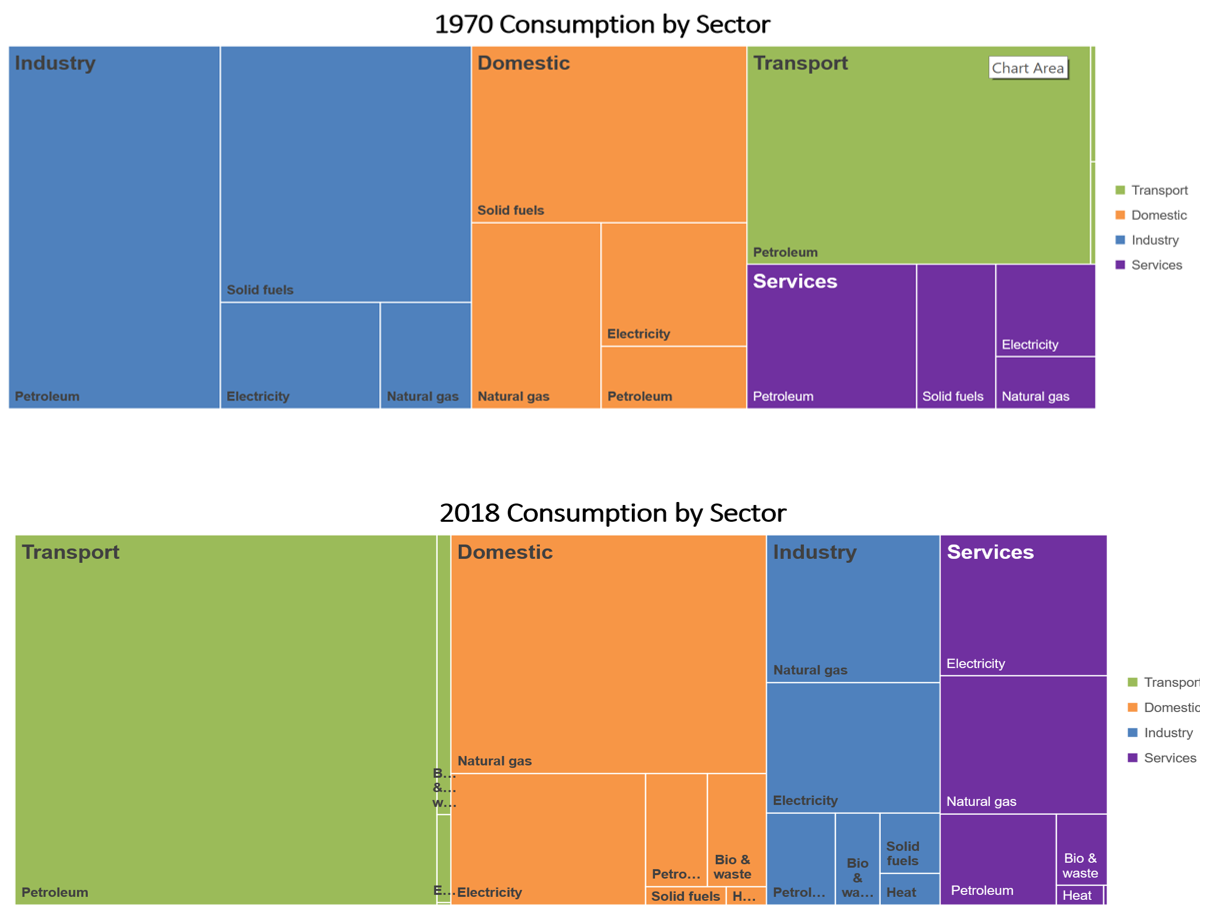This article is based on a talk given at the Oxford Energy Colloquia, on 22 October 2019.
The Opportunities
The benefits created by renewable energy are numerous. They include reduced costs, capacity to bring electricity to new remote locations, thus improving living standards and opportunities to new communities, ability to increase security over energy generation and be less dependent on geopolitical issues. Using renewable energy technologies reduce pollution and addresses climate change.
Public acceptance of renewable energy is very high
Numerous studies show that people across all ages, education levels and political standpoints are in favour of a world fully powered by renewables.
A survey of 26,000 people across 13 countries shows that a very high percentage think it is important to create a world fully powered by renewables. Already, since 2018, 42 cities around the world are 100% renewably powered; an additional 101 are 70% renewably powered and a further 22 are 50% renewably powered, according to the CDP. In the UK, the 'Wave Tracker' surveys run by BEIS over many years, consistently show very high support for all forms of renewable energy (see Figure 1), with opposition extremely low.
Action is happening from the bottom up: so far, 95 local government leaders and councils have signed up to the UK100 network, and pledged to secure the future for their communities by shifting to 100% clean energy by 2050.
 Public support for renewables
Public support for renewablesPublic support for renewables
Figure 1 Public support for renewables in the UK over 2012 to 2019 – renewables consistently get high scores.
Source: BEIS Public Attitudes Tracker, March 2019, Wave 29, Figure 15
We have come a long way already
Innovative analysis by Carbon Brief shows us how the UK has transformed its electricity supply in just a decade. In 2008, some 80% of the UK’s electricity came from fossil fuels, making a significant contribution to the county's greenhouse gases. Skip forward to 2019 and many things have changed: coal-based power has practically disappeared; gas use has reduced and over half of electricity is powered by renewables and nuclear. Over July-September 2019, UK renewables generated more electricity than fossil fuels for the first time ever.
The falling costs of renewables and increasing costs of nuclear
One of the reasons for this transformation, is the rapidly falling costs of renewable energy around the world. Electricity from solar and wind can be produced at costs that are lower than any other forms of power, and deployed around the world, bringing electricity to remote places where connection to a grid network would be prohibitive. Renewable energy is now successfully competing against fossil fuels, without subsidies or financial support. With the right regulatory & institutional frameworks, competitiveness can only improve.
Further to this, the world is witnessing an "organic nuclear phaseout" according to the 2019 World Nuclear Industry Status Report (WNISR), "the authoritative report on the status of nuclear power plants worldwide". It states that, "Nuclear power... meets no technical or operational need that renewable competitors cannot meet better, cheaper, and faster."
Over the past decade, cost estimates for utility-scale solar dropped by 88%, wind by 69%, but nuclear increased by 23%. Over the past two years, the largest historic nuclear builder Westinghouse and its French counterpart AREVA have gone bankrupt. EDF have stated that Hinkley Point C faces even more delays with costs escalating to ~£22 billion. Safety concerns are also relevant: Japan's environment minister has called for the country’s nuclear reactors to be scrapped to prevent a repeat of the Fukushima nuclear disaster.
 World Nuclear Industry Status Report 2019
World Nuclear Industry Status Report 2019World Nuclear Industry Status Report 2019
WNISR2019 urges everyone to meet climate targets by using least-cost and in-least-time principles, and this means using non-nuclear options as they save more carbon per dollar and per year. The slow pace of nuclear development is critical: new nuclear plants take 5–17 years longer to build than utility-scale solar or onshore wind power, so existing fossil-fuelled plants emit far more CO2 while awaiting substitution by the nuclear options. In response, France has started to repower nuclear sites with solar panels.
A great success story: offshore wind
The September 2019 'Contracts for Difference' (CfD) auction in the UK delivered record low prices for electricity production from 2023. A total of 5.5 GW of power was contracted, mostly offshore wind, alongside 0.3 GW of onshore wind. The sites selected are expected to generate ~29 TWh of electricity annually, equal to 9% of UK's total 2018 output and sufficient to power 25% of the country's 26 million homes.
The auction saw winning prices much lower that what the government had forecast. The prices are so low that the UK windfarms could generate electricity more cheaply than existing gas-fired power stations as early as 2023, much earlier than the expected tipping point of 2030 and with none of the greenhouse gas emissions.
The CfD scheme is the government's main mechanism for supporting low-carbon electricity generation. A long-term contract is created between the government and a developer that has bid the lowest price, guaranteeing a price for 15 years. This approach gives investors the confidence to develop projects with high upfront costs and long lifetimes.
The process has enabled technological innovation, producing larger, more efficient turbines that can produce more energy. For example, the turbines to be built at Doggerbank, 130 km off the Yorkshire coast will be the world's largest turbines. Each turbine will be 220 m high, twice the height of the London Eye, with 100 m long blades. They will be a third more powerful than current, typical turbines, and each one is expected to generate enough electricity for 16,000 homes.
The Challenges
Variability
A key one is the variability of many renewable energy systems, such as wind and solar. Technological developments are urgently needed to scale up tidal, geothermal and wave power which can produce energy more consistently.
The variable nature of wind and solar poses problems for balancing supply and demand on different timescales (from seconds to seasons) and on different spatial scales. The distributed nature of these energy resources also adds complexity in terms of connecting them to the existing grid infrastructure. These aspects means that we need to amend and redesign not only the way in which we deliver electricity, but also the electricity market, which is designed for fossil fuel generators. Associated with this redesign is the need for new regulation and governance models and procedures.
The solution to variable power production is a mix of flexible generation & demand, interconnections and storage capacity. The storage capacity of the UK was successfully deployed during the power cut on 9 August 2019, where the reserve of 475 MW of batteries were called upon not only to provide power following the loss of the first generator that failed, but also to absorb excess power, when the grid then cut off part of the network. One way to avoid such power cuts in the future to ensure more battery reserve capacity: doubling this would be extremely cost-effective compared to the economic costs that would be incurred from power cuts.
Flexible demand is a new concept, and refers to not using electricity at certain times, and is also termed "demand side response". This requires energy users (individuals, businesses, industries) to shift their demand in real time, in response to price or other signals. Given the technological advances, computing power, automatic control systems, and the development of 'smart' appliances, the potential is huge.
An example is the current trials underway between the National Grid and Asda, and Tesco. Given that commercial refrigeration units need a daily defrost, the timing of the defrost can be matched to grid surges, potentially reducing demand for electricity by up to 50 MW. To help you put this into context, the annual average household use of electricity is just over 3 MWh, so the shutdown of these fridge units for just one hour is equivalent to the electricity used by 16 households for a year.
Algorithms will ensure the duration of the defrost does not exceed the thermal inertia of the fridges to negate any food safety threats. As mass refrigeration generates up to 12% of the UK's greenhouse gas emissions, this approach could have significant benefits. With increasing adoption of smart meters and domestic appliances, and the Internet of Things, your frozen peas could soon have a double life as a cold battery too….
Another flexibility service being trialled, is to use excess electricity in the grid, i.e. when there is more supply than demand, by heating water in smart hot water tanks: essentially using water as a battery. This approach is much better than the current approach which is turn off the supply from wind turbines and solar farms: an incredible waste of clean, cheap energy. The idea is that when there is excess electricity available, the smart tanks will use this to heat water. Not only does this produce hot water to households without any perceptible impact, it also reduces the pressure on the grid infrastructure and allows more renewable energy sources to be connected.
Alas, in a 2019 survey by the Energy Institute, there are key structural issues that need to be addressed before flexibility services can meet its potential, see Figure 2. These include changing a lack of political will or interest; the lack of integration between different sectors; and the current market structures around flexibility.
 Barriers to flexibility
Barriers to flexibilityBarriers to flexibility
Figure 2 Barriers to scaling up flexibility responses identified by practitioners in the energy industry – these must be changed to realise the potential of this approach.
Source: UK Energy Institute Barometer: 2019 survey
The same survey by the Energy Institute found that Brexit was considered to be the biggest challenge for the energy industry. Let's look at this with regard to interconnectors, which play a critical part in the solution to variable power production.
These are cables that physically link different areas and allow electricity to be transported to demand centres. These help distribute energy from renewable energy between different areas, and are a solution to balancing demand and supply over large areas. There are currently 4, connecting the UK with Ireland, France and The Netherlands, providing about 7% of the UK’s electricity.
BEIS planned to have many more interconnectors both to buy and sell electricity to the European mainland. It estimated that more than a fifth of our energy could come from interconnectors by 2025 due to plans for 11 new connections.
However, because the UK is part of the EU Single Market and the Internal Energy Market which makes imports and exports tariff-free, there is great uncertainty over what may change with regard to prices and tariffs due to Brexit uncertainty, and this may mean fewer interconnectors are constructed.
Energy not just electricity
A huge challenge we must overcome is how to use renewables for low cost energy, not just electricity. While renewables are playing an increasing role providing electricity; they are overshadowed by our much greater use of gas and oil for space heating and transport, see Figure 3. We urgently need to decrease energy demand and increase energy efficiency.
 2018 Energy use
2018 Energy use2018 Energy use
Figure 3 How the UK generated energy in 2018 – fossil fuels accounted for 85% of the energy source.
Source: BEIS Digest of United Kingdom Energy Statistics 2019 (PDF)
Data from the Office of National Statistics on energy consumption in the UK show that thankfully, demand has been falling over the past two years, as more appliances have become more efficient and our economy switches to be more services based than manufacturing, see Figure 4.
However improving the energy efficiency of housing and buildings has stalled with government statistics showing that only 69% homes have cavity wall insulation (14.1m of possible 20.3m with cavities); only 66% have insulation to a depth of at least 125mm (16.5m out of total 25m) and 11% of homes are classed as being in fuel poverty (2017).
This is despite energy efficiency improvements being considered to be vital to a productive economy and to cutting carbon emissions without unnecessary cost, with many calls to the government to roll out effective schemes falling on deaf ears.
How could renewables provide energy, not just electricity? Some examples include the use of solar for hot water (heating hot water is the second most intensive use of energy in the home) and the long-term storage of renewable electricity (e.g. thermal or chemical batteries). Alternatives to natural gas are being explored and include hydrogen, ammonia and/or green gas from biomass. There should be an expansion of local heat networks. At the moment, there are 17,000 local heat networks but these only supply 2% of heat demand: there could, and should, be more.
 Energy consumption 1970 - 2018
Energy consumption 1970 - 2018Energy consumption 1970 - 2018
Figure 4 Change in energy consumption from 1970 to 2018 by sector - industry was the biggest consumer of energy in the 1970s: now transport and domestic heating are the largest users.
Source: BEIS Digest of United Kingdom Energy Statistics 2019 (PDF)
Changing mindsets
Arguably the biggest challenges to overcome are not the technical aspects, but making the necessary changes to policy, regulation and markets, and helping everyone in society shift to a low carbon future. Current arrangements were designed for energy generated by fossil fuels and need to be changed urgently, alongside their very large subsidies. The changes needed include correcting market failures, policy interventions such as carbon pricing, and changes to the way in which social and network levies are implemented. For example, taking them off electricity bills onto gas bill, or general taxation.
Achieving net zero emissions is a concept that must be placed at the heart of all decision-making, as the need to ensure the well-being of future generations, as set out clearly by the Welsh government.
Ultimately, we need to adopt an approach which is least carbon, not purely least cost, to address flaws in current economic models and to mitigate climate change, and ensure we maximize the use of renewable energy.
In conclusion: we are making progress
We have come such a long way in the past ten years, both in our understanding of climate change issues and potential solutions, but also in starting to change systems and processes to decarbonise our world.
There are no laurels to rest on yet but we are making progress.



